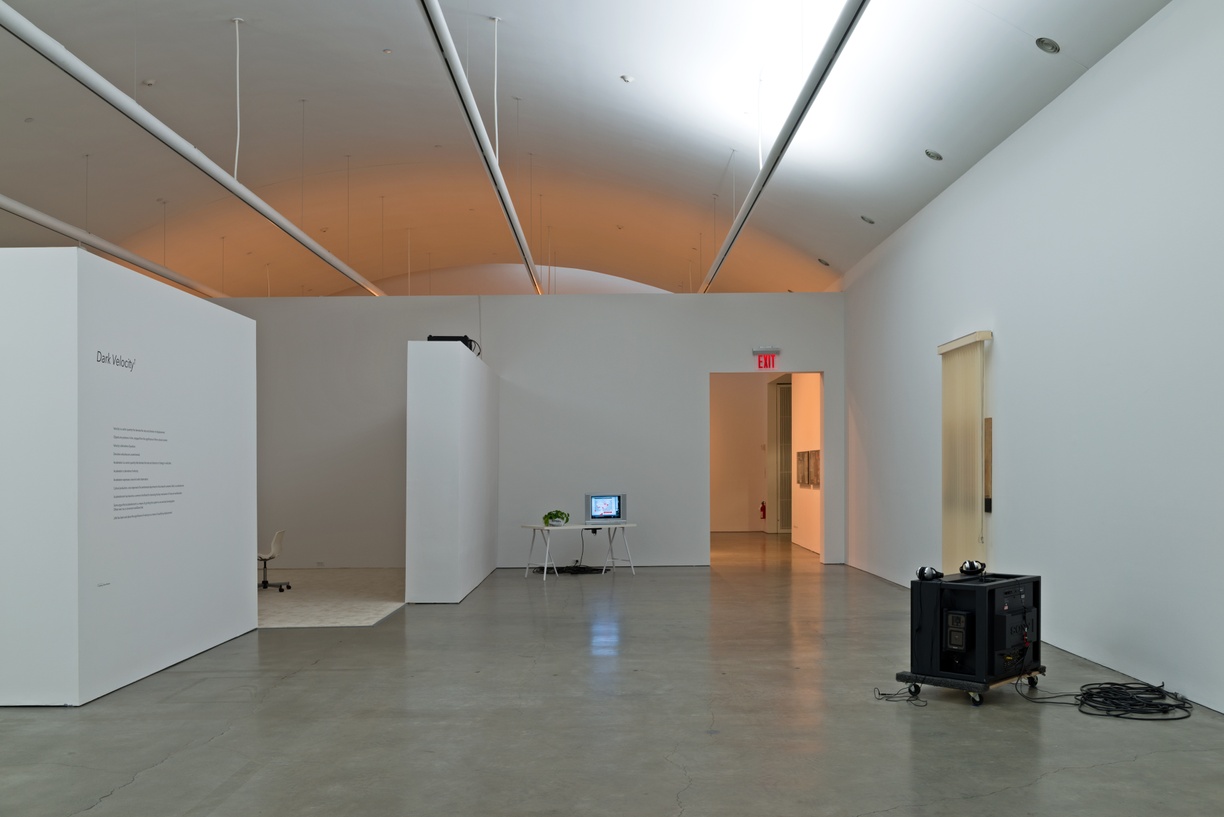
Trisha Baga, Alisa Baremboym, Brace Brace, DIS, GCC, Victoria Ivanova, Seth Price, Christopher Kulendran Thomas, Ryan Trecartin
Dark Velocity1 proposes a conscious intensification of neoliberalism’s internal contradictions. Neoliberalism can be understood as a form of governmentality that is dispersed through the individual, concentrating power by privatizing profits and socializing risks under the emancipatory idea of individual autonomy. Dark Velocity1, unlike leftist strategies based on critique, disruption or exit, stands for a systemic intervention into the very order of the neoliberal system by inhabiting its forms. The underlying logic of the manoeuvre is to inflect capitalization by rewiring its own technologies.
Dark Velocity1 tests the viability of accelerating rather than resisting existing platforms of capitalization through an unsentimental engagement with networked flows of power, value and desire. Understanding art, beyond the subject-object dichotomy, as an interface between human and non-human materiality, Dark Velocity1 extends the kind of integrative thinking that takes material conditions as the very basis of praxis. Contemporary art’s various ideas of autonomy (artistic, experiential, interpretational), as well as its claims of criticality and the supposed singularity of the artwork, are all mobilized as status quo infrastructural arrangements to be reorganized for wider systemic effect. The aim is to renegotiate the structuring of agency and to shift from a position of critical distance to one of instrumentalized enactment.
Dark Velocity1 is an initial displacement towards an ongoing trajectory.
1 Courtesy Gean Moreno



